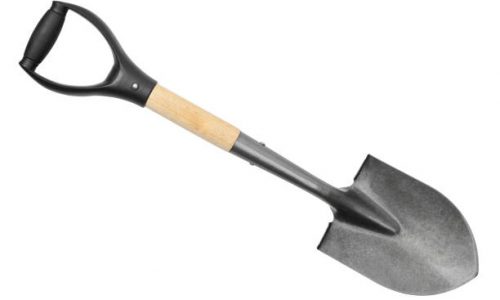Project Report For Shovel Manufacturing
Introduction
Project Report for Shovel Manufacturing is as follows.
A shovel can be used to dig, lift, and move a variety of materials, including snow, coal, gravel, soil, sand, and ore. A typical shovel has an approximately equal-length handle and a wide blade. Shovel blades are frequently made of long-lasting materials like sheet steel or tough polymers. Hardwoods like ash and maple as well as fiberglass-reinforced plastic are frequently used for shovel handles.
The majority of hand shovels have sheet steel blades, and the socket for the handle is formed at the back by a folded seam or hem. For better grip and control, a shovel designed to move soil or heavy objects frequently has a T-piece attached to the end of the handle. Each of these designs is straightforward enough to be produced in large quantities.

Types of Shovel Manufacturing
- Edging Shovel :- This shovel has been specifically created to make clean, distinct edges around lawns or borders. It has a long shaft with a little metal semi-circle connected at the bottom, as well as an even footplate where you may press down using your feet. is attached to a long base. The blade is typically flat and sharp because it needs to press firmly into the soil or grass. Since it doesn’t need to make deep cuts to be effective, the blade is quite shallow. Although their primary use is for creating and maintaining garden edging, these can also be helpful for other tasks, such as breaking up shallow plant roots.
- Trench Shovel :-The trenching shovel, also known as a ditch shovel, has two purposes. It can dig shallow trenches first, then clean up deeper holes dug by a stronger tool. A trench shovel blade is long, narrow, and has a pointed tip. It is also angled. Because there isn’t much area on the footplate for your weight to force the shovel into the ground, you’ll have to rely on arm strength instead. This is because the shovel’s blade is so small. This indicates that excavating anything deeper than a shallow trench would be incredibly difficult and time-consuming. Trench shovels are mostly used by landscape gardeners.
- Tree Planting Shovel :- A work that would take much longer with other types of shovels can be performed much more rapidly with these shovels. They are specially intended for tree planting. By circling the shovel in the earth, it can dig holes of varying sizes. Longer shafts perform better on flat, smooth terrain, whereas shorter shafts perform better on slopes or inclined terrain. These shovels can be used to dig a hole for planting a tree or to dig up a tree for relocation. In terms of shape, the shovels are similar to trenching tools.
- Portable Shovel :- The names of these shovels range from garden shovel to garden trowel to hand shovel to hand trowel to garden spade (although to call this a spade would be incorrect). These are essentially small shovels that can be used for a variety of gardening tasks, such as pulling weeds, removing plants, and creating holes for new plants. Their short shafts, which are typically around six inches long, are what distinguish them from larger shovels. These tools can be made in a variety of ways, but they all generally have a narrow, rounded or pointed blade that is about four inches across. A handheld shovel typically has a convex blade for better scooping.
Project Report Sample on
Shovel Manufacturing
Get Completely Custom Bankable Project Report
Market Potential Of Shovel Manufacturing
The market for shovels was valued at 58 billion dollars in 2019 and is projected to grow to 95.2 billion dollars by 2027 at a CAGR of 6.4%.
The main demand generators for the product on the market are the expansion of urban infrastructure in developing nations and the globalization of the construction equipment manufacturing industry. The socioeconomic growth dynamics of the construction industry generated 140 billion USD in revenue for the global construction equipment market in 2019, an increase of 14.4% from 2015.
The main restraints on the market’s growth during the forecast period are rising aluminium and steel tariffs around the world and high product costs, particularly for excavators and backhoe loaders. Additionally, it is anticipated that the market will face challenges during the forecast period due to the declining value of resource-based services and falling sales of equipment used in construction. New product launches by established market players are, however, the primary elements anticipated to generate profitable opportunities for the up-and-coming players.

